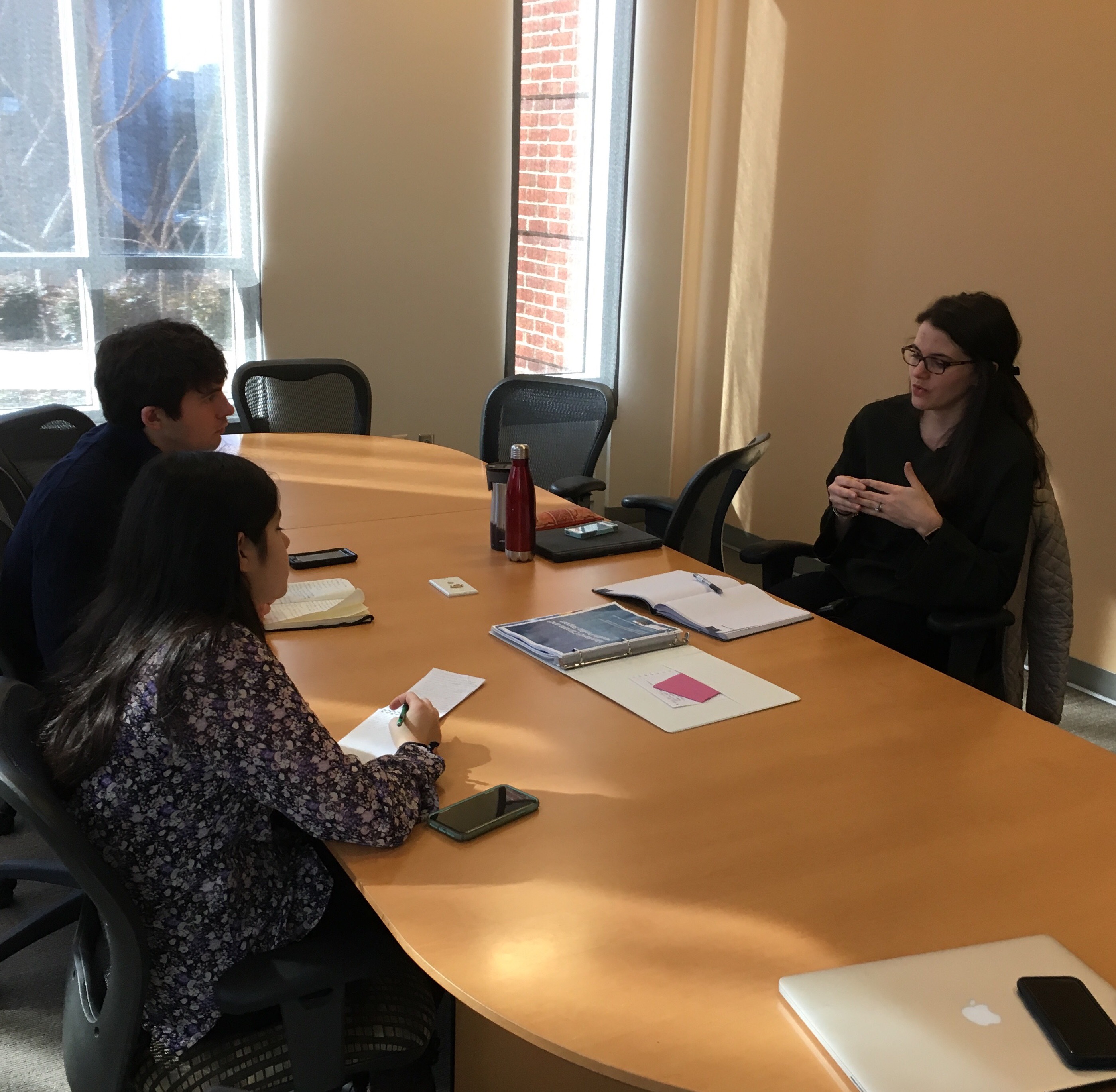Extreme temperatures pose a serious, long-term health threat for people with chronic medical conditions like asthma, respiratory diseases, obesity, diabetes, heart disease, cancer, mental illness and multiple sclerosis. We all know that people die of heat stroke in the summer or of heart attacks after shoveling snow. We know a lot less about the long-term effects on large populations of living in extreme heat and cold. Reporters at the Philip Merrill College of Journalism at the University of Maryland are working with National Public Radio and students at Wide Angle Youth Media in Baltimore on a project to look at how heat and cold in Baltimore homes affect residents' health – particularly as climate change becomes more and more significant. Learn more and get involved.
A Conversation With Allison Gost Breitenother

By Noah Johnson
Capital News ServiceMarch 14, 2019
On Tuesday, March 5, Capital News Service reporters talked with Allison Gost Breitenother, program manager for the Environmental Health Bureau of the Maryland Department of Health.
Much of what was discussed focused on the dangers of extreme heat and severe precipitation, and health concerns stemming from climate change, including asthma and heart attacks.
Severe cold, she said, “was not as large of a piece of the climate and health reality in Maryland,” Breitenother said. “It was not an intentional omission…we’re just going to focus on heat and precipitation right now because that’s where the data is.”
Cold-related deaths are projected to decrease in the future as winter temperatures become warmer, Breitenother said, although cold snaps will remain a concern.
Breitenother also said the health department identifies vulnerable communities most in need of aid during periods of extreme weather.
For example, during periods of extreme heat, Breitenother said that the risk of heart attacks among non-Hispanic white people between the ages of 18 and 65 increases by about 3 percent. The same risk increases by 38 percent among non-Hispanic black individuals between 18 and 65. The difference in risk profiles among these groups shows that the non-Hispanic black population has a vulnerability, which helps the health department identify communities in need of aid. Other determinants of vulnerability include education level, access to healthcare and location.
“There’s so many different pieces of social determinants of health,” Breitenother said. “Your community structure, access to resources and not just your hospital, but your just basic resources.”
To improve Maryland’s health programming, Breitenother emphasized the importance of effective “bottom-up” planning where federal and state funding is directed to programs determined by communities.
“In terms of effective programming, I would argue that federal funds sent to the state and funneled into the communities for community implementation are going to be the most effective,” Breitenother said. “…The communities know what they are experiencing the most and a lot of times what they just need is the funding and a little bit of technical support.”
Baltimore is currently the “go-to” Maryland city for health and climate programming, she said, mainly because there is data showing the city’s need for funding in areas like climate, health, poverty and education.
“Baltimore City gets a lot of programming and a lot of funding. …If there’s a hotspot, it’s Baltimore City.”
One of the reasons why so much data is available is that Baltimore has “a bit” of a mature urban heat island, due to its age, number of tall buildings and large amount of impervious surfaces, Breitenother said. This can increase the probability and severity of certain climate-related issues. An urban heat island is a city that is hotter than its surrounding suburban and rural areas due to the prevalence of paved surfaces, relative lack of tree cover and greenery and concentration of people and infrastructure.
“The big problem with an urban heat island and heat in cities specifically is the inability of them to cool overnight,” Breitenother said. Without overnight cooling, Baltimore’s population does not benefit from an overnight “recovery period” during stretches of extreme heat, Breitenother said.
The health department wants to stunt the negative health effects of climate change. Increasing the tree canopy, implementing a green infrastructure for stormwater management and helping churches adopt environmentally-friendly building practices are all part Maryland’s green initiative, according to Breitenother.





